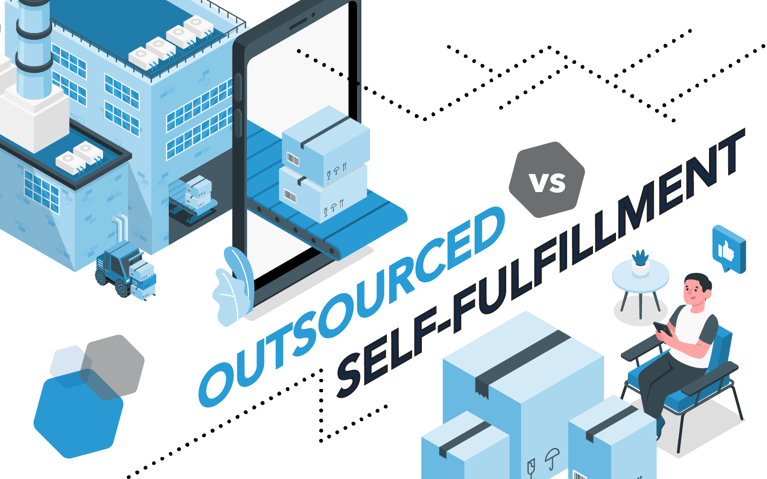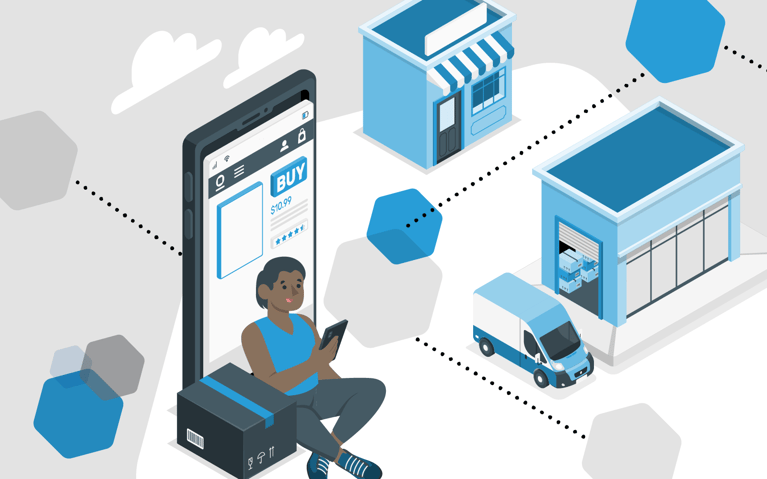The importance of last-mile delivery in the supply chain cannot be overstated. It’s the final step in the delivery process and is crucial for ensuring customer satisfaction and loyalty. Last-mile delivery comes with its own set of challenges. Issues such as traffic congestion, high costs and increasing customer expectations for speed and accuracy make it critical that this last leg of the journey is optimized and efficient. However, these challenges also present opportunities for retail brands to differentiate themselves through innovative solutions.
In this blog, we'll explore effective strategies for achieving fast and reliable last-mile delivery. From route optimization and technology integration to local partnerships and customer communication, we'll provide actionable insights to help your brand enhance its post-purchase and delivery experience. Whether you're looking to streamline operations or improve customer satisfaction, these strategies will equip you with the tools needed to excel in last-mile delivery.
The role of last-mile delivery in the supply chain
Last-mile delivery is the final step of the delivery process where goods are transported from a transportation hub to their final destination, typically the customer's doorstep. This stage plays a pivotal role in the supply chain, directly influencing customer satisfaction and retention. For instance, a customer eagerly awaiting a new smartphone or a time-sensitive order relies on efficient last-mile delivery to ensure timely arrival.
This phase is significant, as it often shapes the customer's overall perception of the brand. Fast, reliable last-mile delivery can enhance customer loyalty and encourage repeat business, while delays or errors can lead to dissatisfaction and negative reviews. A study by Voxware found that 14 percent of consumers will abandon shopping with a retailer altogether if they receive a late delivery just one time. Understanding and optimizing last-mile delivery is essential for retail brands looking to maintain a competitive edge and foster strong, lasting customer relationships.
Key challenges in last-mile delivery
Last-mile delivery poses challenges that can affect efficiency and costs. Navigating these hurdles is essential for brands aiming to provide reliable service. Here are some key challenges in last-mile delivery:
- Traffic congestion: Urban traffic can significantly delay deliveries, leading to longer wait times for customers and inefficiencies for delivery drivers. For example, a delivery truck stuck in city traffic may miss its delivery window, disappointing customers.
- High costs: Last-mile delivery often involves numerous stops with small drop sizes, making it the most expensive part of the delivery process. The financial burden includes fuel, labor and vehicle maintenance costs, which can quickly add up.
- Customer expectations: With the rise of services like same-day delivery, customers now expect faster and more accurate deliveries. Meeting these expectations requires sophisticated logistics and real-time tracking systems, putting additional pressure on retailers.
- Address accuracy: Incorrect or hard-to-find delivery locations can cause significant delays and failed delivery attempts. For instance, a delivery driver may waste valuable time searching for an unmarked apartment in a large complex, leading to inefficiencies and increased costs.
Effective last-mile delivery strategies
Improving last-mile delivery requires strategic approaches to overcome challenges and meet customer expectations. Here are some effective strategies to ensure fast and reliable service:
Route optimization
Utilize advanced routing software to plan the most efficient delivery routes. This software considers factors like distance, traffic and delivery time windows. Implement dynamic routing to adapt to real-time traffic conditions. For example, if a delivery truck encounters a traffic jam, the route can be adjusted instantly to avoid delays.
Technology integration
Use GPS and tracking systems for real-time delivery updates, ensuring both the delivery team and customers know the exact location of packages. Leverage AI and machine learning for predictive analytics and demand forecasting, allowing better planning for peak times and unexpected surges.
Local partnerships
Partner with local couriers and delivery services for better reach and flexibility. This can help in areas where traditional delivery services may struggle. Explore crowd-sourced delivery options for scalability, using platforms that connect local drivers with delivery needs, similar to how Uber works for transportation.
Warehouse and inventory management
Use a 3PL warehouse or multi-node network to bring products closer to customers, reducing delivery times. Invest in an inventory management system that ensures product availability and reduces delays by keeping track of stock levels in real-time. A modern Warehouse Management System (WMS) enhances last-mile delivery efficiency by optimizing inventory management and ensuring timely, accurate order fulfillment.
Delivery methods
Offer multiple delivery options such as same-day, next-day and scheduled deliveries to meet varying customer needs. Explore the use of drones and autonomous vehicles for faster deliveries, especially in urban areas where traffic can be a major issue.
Customer communication
Provide transparent and real-time communication with customers about their delivery status through SMS or email notifications. Implement feedback systems to gather customer insights and improve service. This allows for adjustments based on direct customer experiences and preferences.
Measuring last-mile delivery success
Effective last-mile delivery strategies hinge on monitoring and optimizing key performance indicators (KPIs). One crucial KPI is the on-time delivery rate, which measures the percentage of deliveries that arrive within the promised timeframe. This metric is vital for maintaining customer trust and satisfaction, as timely deliveries are often a primary expectation for online shoppers. Another essential KPI is delivery accuracy, which tracks how often orders are delivered correctly without errors or missing items. High delivery accuracy reduces the need for costly returns and replacements, enhancing overall efficiency.
Customer satisfaction scores are also a critical KPI, providing direct feedback from customers about their delivery experience. These scores can highlight strengths and pinpoint areas needing improvement, such as communication, handling and packaging. Additionally, the cost per delivery helps you monitor and manage the expenses associated with last-mile logistics. Lowering this cost without compromising service quality is a constant challenge but necessary for maintaining profitability.
Continuous improvement is vital for staying competitive in last-mile delivery. Utilizing data analytics allows you to assess delivery strategies and identify improvement areas continually. You can make informed decisions to streamline operations by analyzing patterns and trends. Regular audits and reviews are also crucial, helping to uncover inefficiencies and implement corrective actions. For instance, if data shows that a particular route consistently causes delays, dynamic routing adjustments can be made to avoid traffic congestion and ensure faster deliveries.
Cart.com for streamlined last-mile delivery
Whether you’re looking for carrier partnerships, optimized transportation or best-in-class fulfillment software, Cart.com can help you streamline last-mile delivery. Contact our team today to find out more. Last-mile delivery directly impacts customer satisfaction, retention and overall brand reputation, making it a critical part of your fulfillment operations.
Subscribe to our emails for the latest industry insights!
By entering your email, you agree to receive marketing emails from Cart.com








